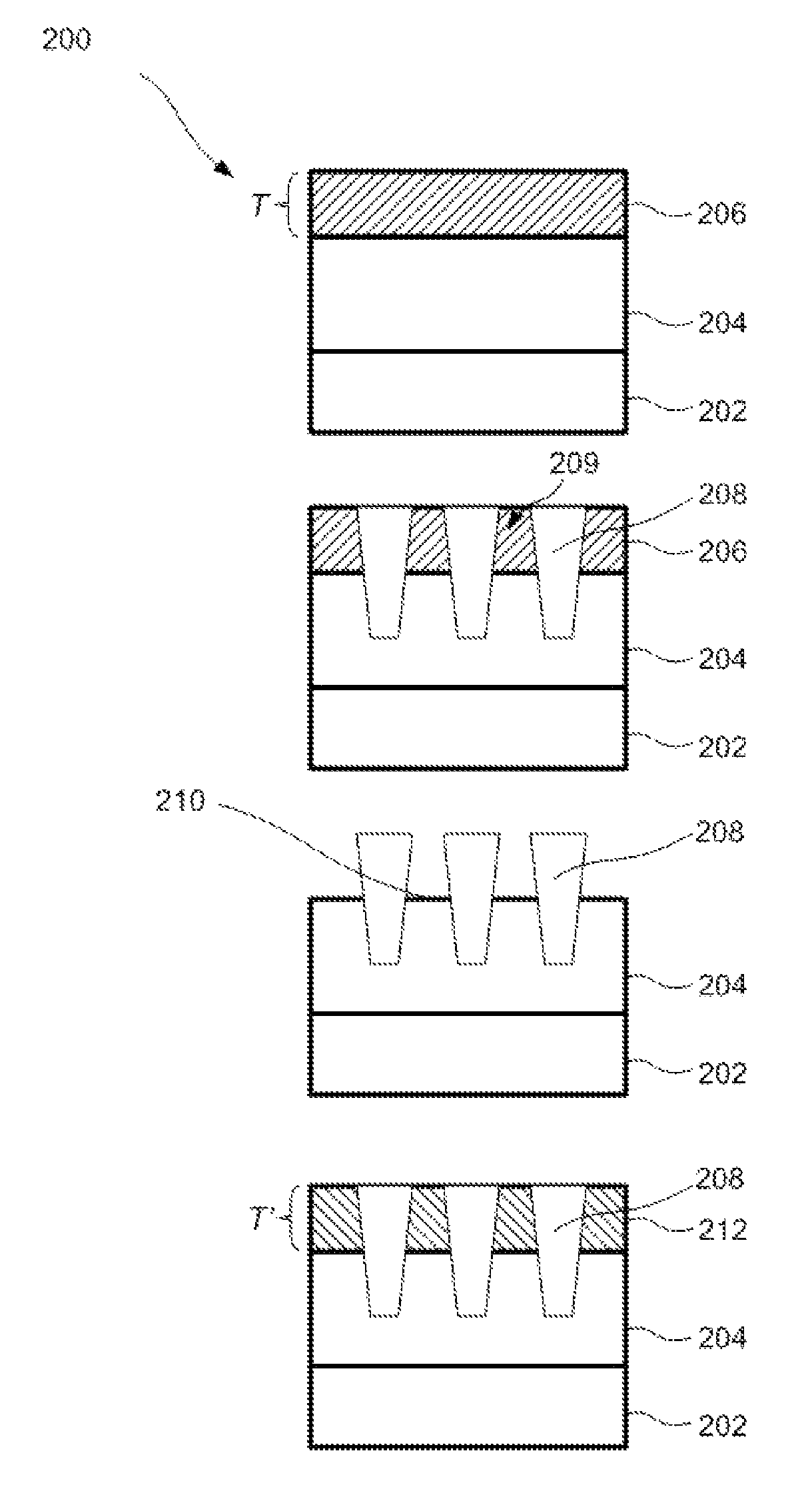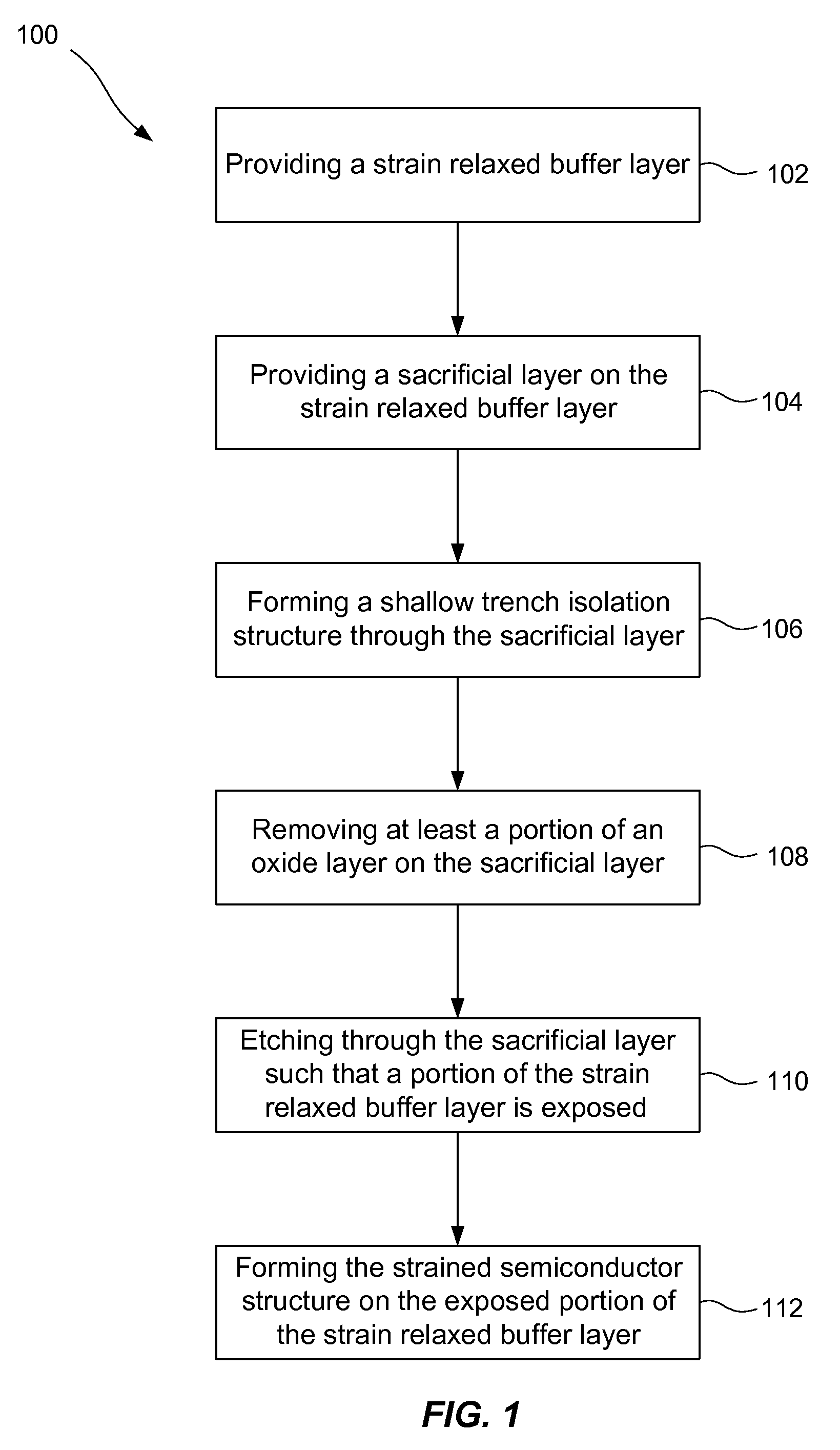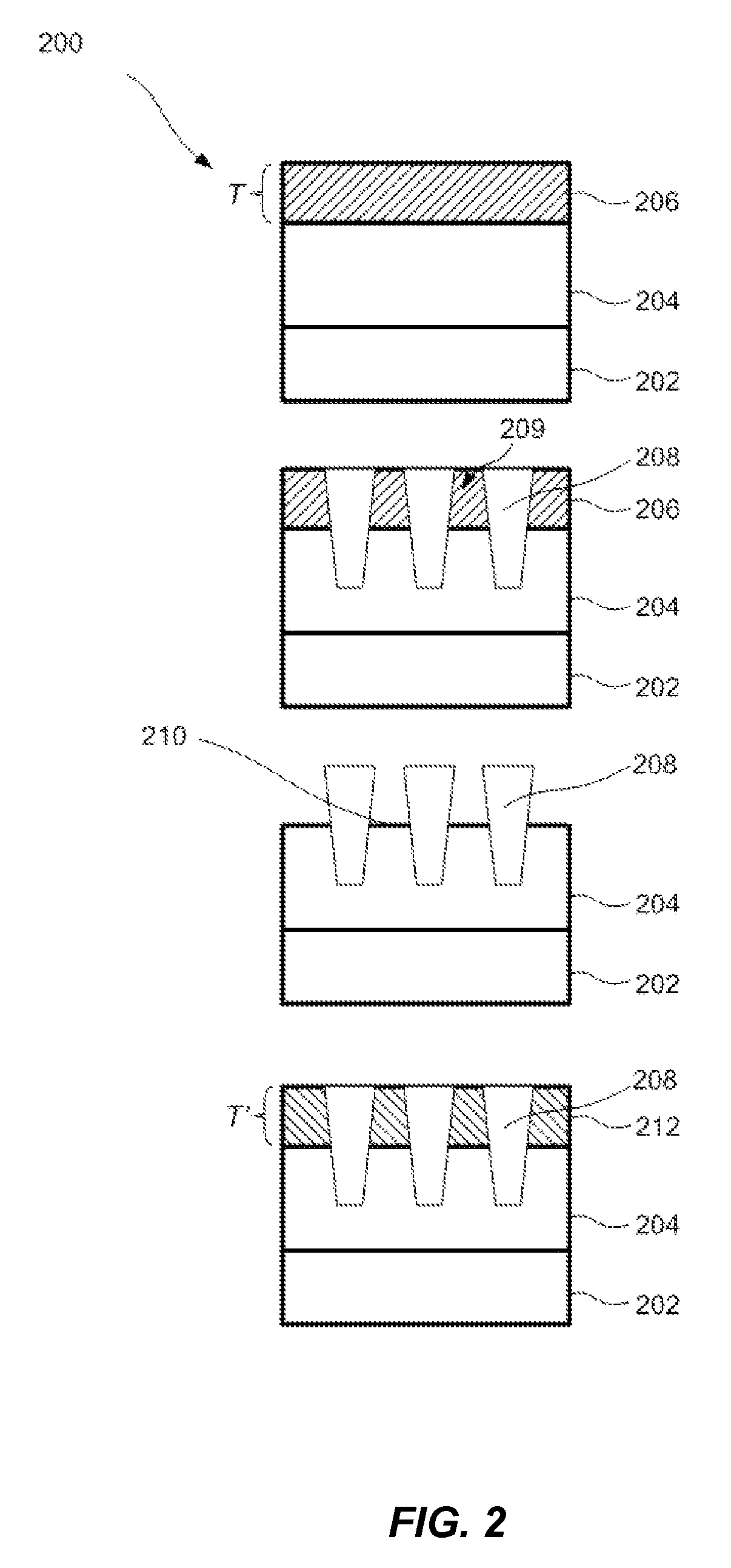Method for forming a strained semiconductor structure
a technology of strained semiconductors and buffer layers, applied in the direction of semiconductor devices, basic electric elements, electrical apparatus, etc., can solve the problems of reducing device performance, reducing device stability, and reducing device performance, so as to facilitate the handling improve the stability of the strain relaxed buffer layer, and improve the effect of material quality
- Summary
- Abstract
- Description
- Claims
- Application Information
AI Technical Summary
Benefits of technology
Problems solved by technology
Method used
Image
Examples
Embodiment Construction
[0037]FIG. 1 illustrates a method 100 for forming a strained semiconductor structure. The method 100 comprises providing a strain relaxed buffer layer 102, providing a sacrificial layer on the strain relaxed buffer layer 104, forming a shallow trench isolation structure through the sacrificial layer 106, removing at least a portion of an oxide layer on the sacrificial layer 108, etching through the sacrificial layer such that a portion of the strain relaxed buffer layer is exposed 110, and forming the strained semiconductor structure on the exposed portion of the strain relaxed buffer layer 112.
[0038]The method 100 is based, at least in part, on the realization that by using a sacrificial layer on the top of the strain relaxed buffer layer (SRB layer) oxide formation and atom migration on the SRB layer may in relation to prior art be counteracted when forming the strained semiconductor structure. The method may therefore provide well-controlled trench recess and improved regrowth of...
PUM
 Login to View More
Login to View More Abstract
Description
Claims
Application Information
 Login to View More
Login to View More - R&D
- Intellectual Property
- Life Sciences
- Materials
- Tech Scout
- Unparalleled Data Quality
- Higher Quality Content
- 60% Fewer Hallucinations
Browse by: Latest US Patents, China's latest patents, Technical Efficacy Thesaurus, Application Domain, Technology Topic, Popular Technical Reports.
© 2025 PatSnap. All rights reserved.Legal|Privacy policy|Modern Slavery Act Transparency Statement|Sitemap|About US| Contact US: help@patsnap.com



